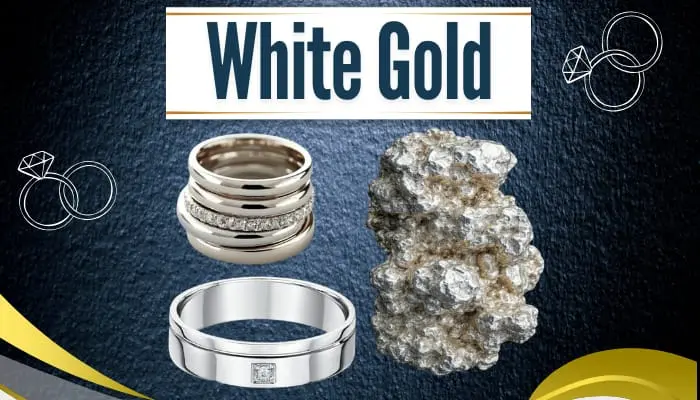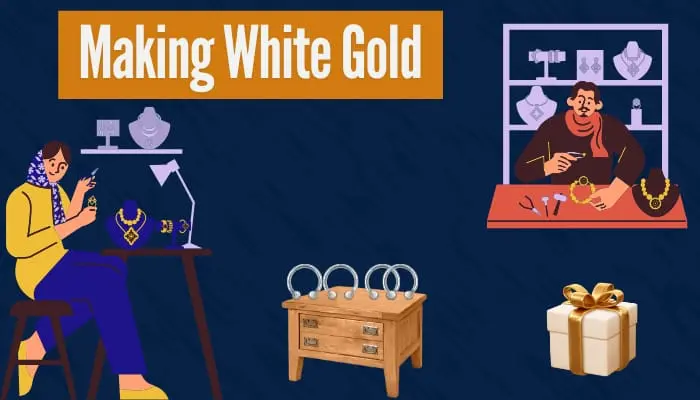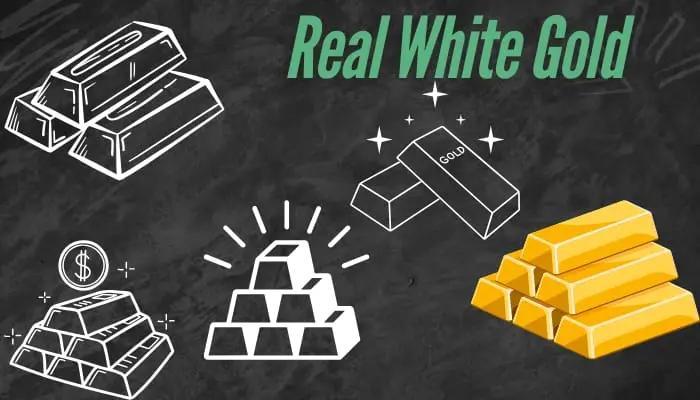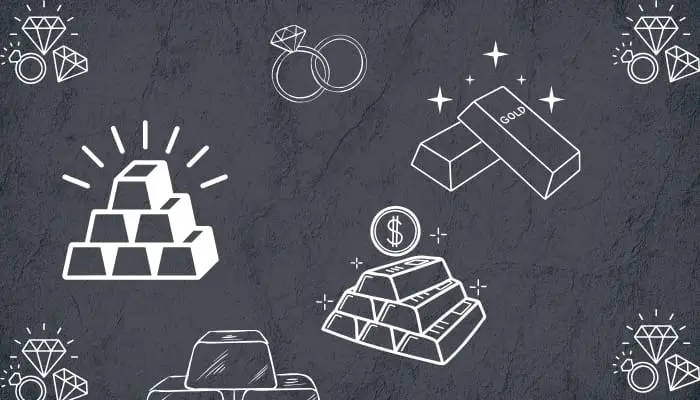What Is White Gold? And How Is It Made? You Know the Facts?
Published: 25 Dec 2024
White gold is one of the most popular choices for modern jewelry, but guys, did you know it doesn’t exist in this world naturally?
Confused? How is this possible? However gold is a naturally occurring metal.
Guys, let me tell you, white gold is not a metal; it’s an alloy that is made by mixing various metals like pure gold, palladium, silver, and nickel.
But do you know other facts about white gold? No, let’s explore them. Here I shared what white gold is, its types, how it is made, and some pro tips to keep your white gold maintained and in top-notch condition.
So are you ready?
What Is White Gold?

Guys, as I mentioned above, white gold is a precious metal alloy that is popular for its elegance and modern look.
White gold is made by mixing various metals with gold such as
- Palladium
- Silver
- Platinum
- And nickel
These metals not only give the gold a unique color but also enhance their strength 2-5 times longer than pure gold.
And guys, as we know, pure gold is naturally delicate, right? So they are not suitable for jewelry, but white gold is a stronger alloy, and that’s the only reason why they are a popular choice for jewelry.
Are There Any Types of White Gold?
No guys, there is no specific type of white gold, but some white golds are known for the percentage level of pure gold used to make them.
You might have heard about,
- 18k white gold
- 14k white gold
- And 10k white gold
Basically, the word “k” stands for karat or carat, which shows us the purity level of gold.
Usually,
- 24k is pure gold without any mixture.
- 18k white gold contains 75% pure gold and 25% other metals
- 14k white gold contains 58.3% pure gold and 41.7% other metals
- And 10k white gold contains 41.7% pure gold and 58.3% other metals.
How Is White Gold Made?

White gold is made by mixing pure gold with Other shiny metals such as silver, palladium, and nickel. Here is how we make white gold.
- First of all, we define which white gold we have to make. Whether it’s 18k, 14k, or 10k and then we find out how much pure gold and other metals we need.
- In step two, we separate the appropriate quantity of white metals like silver, palladium, and nickel. Each has its own properties such as
- Nickel: it adds durability and hardness to gold.
- Palladium: Ensures a smooth, hypoallergenic finish but is more expensive.
- Silver: Contributes to the alloy’s brightness and malleability.
The exact quantities of these metals depend on the desired characteristics of the final product—whether it should be stronger, more expensive, or affordable.
- In the third step, we melt all the selected items at high temperatures, reaching almost 1,000°C or 1,832°F. We monitor the process properly and ensure all metals have been mixed completely and become alloys.
- In our last step, when we feel the alloy is fully prepared, we pour it into the molds or work it into sheets and wires to give it the desired shape. This stage requires expertise, as the material must maintain its structural integrity during cooling and shaping.
Guys, it mostly becomes our last step, but sometimes we are ordered to plate the white gold with a rhodium layer.
Is White Gold Real?

Yes, white gold is absolutely real—but it’s not pure gold in the traditional sense.
It’s an alloy, which means it Is created by combining pure gold with other metals like silver, palladium, and nickel.
Guys, as we know, pure gold has a yellow color, right? But when we mix it with other shiny metals, it becomes whitish as well as more durable than pure gold.
You know, once the yellow gold is fully prepared, it still seems a little bit yellowish, but jewelers plate it with a layer of rhodium metal, which gives it a pure white and shiny color.
White Gold Maintenance.

Keeping your white gold jewelry is vital as well as easier also. You just need to follow some steps and they are,
- Avoid Harsh Chemicals: Keep your white gold away from cleaning agents, perfumes, and chlorine. They can damage the rhodium plating which makes the white gold bright and shiny.
- Store Properly: Store your jewelry in a soft pouch or separate compartment to prevent scratches.
- Clean Regularly: Use warm water, mild soap, and a soft cloth to gently clean your white gold. Avoid abrasive cleaners, they can scratch it.
- Handle with Care: Remove your jewelry before heavy activities like sports or cleaning to avoid damage.
- Reapply Rhodium Plating: Over time, the rhodium layer will wear off and your white gold will look yellowish. So when you feel your white gold’s upper layer has worn off, go to your nearby jeweler and tell him to replate your gold with a rhodium layer
Guys, by following these steps, I promise you that your white gold will last longer than others that are not cared for properly.
| Advantages of White Gold. |
|---|
White golds are the popular choice for jewelry nowadays. People, especially, demand white gold-made rings, bracelets, and necklaces. Here is how they add value to our lives.
|
| Disadvantages of White Gold. |
|---|
Guys, we know nothing is perfect in this world, right? Everything that has a physical presence has its own downsides and the same also goes for white gold.
|
- White gold was first invented in the 19th century as a strong competitor to platinum jewelry.
- They get their color from metals like nickel and palladium.
- Rhodium plating gives them extra shine and durability.
- They became popular in the 1920s as commercial products.
- The Karat value shows the gold content, not the color.
- Rhodium plating can make them hypoallergenic for a limited time if they contain nickel, but If there is no nickel in white gold, this means it’s naturally hypoallergenic.
- From starting till today, white golds are favorites in Art Deco jewelry designs.

- Be Respectful
- Stay Relevant
- Stay Positive
- True Feedback
- Encourage Discussion
- Avoid Spamming
- No Fake News
- Don't Copy-Paste
- No Personal Attacks



- Be Respectful
- Stay Relevant
- Stay Positive
- True Feedback
- Encourage Discussion
- Avoid Spamming
- No Fake News
- Don't Copy-Paste
- No Personal Attacks





